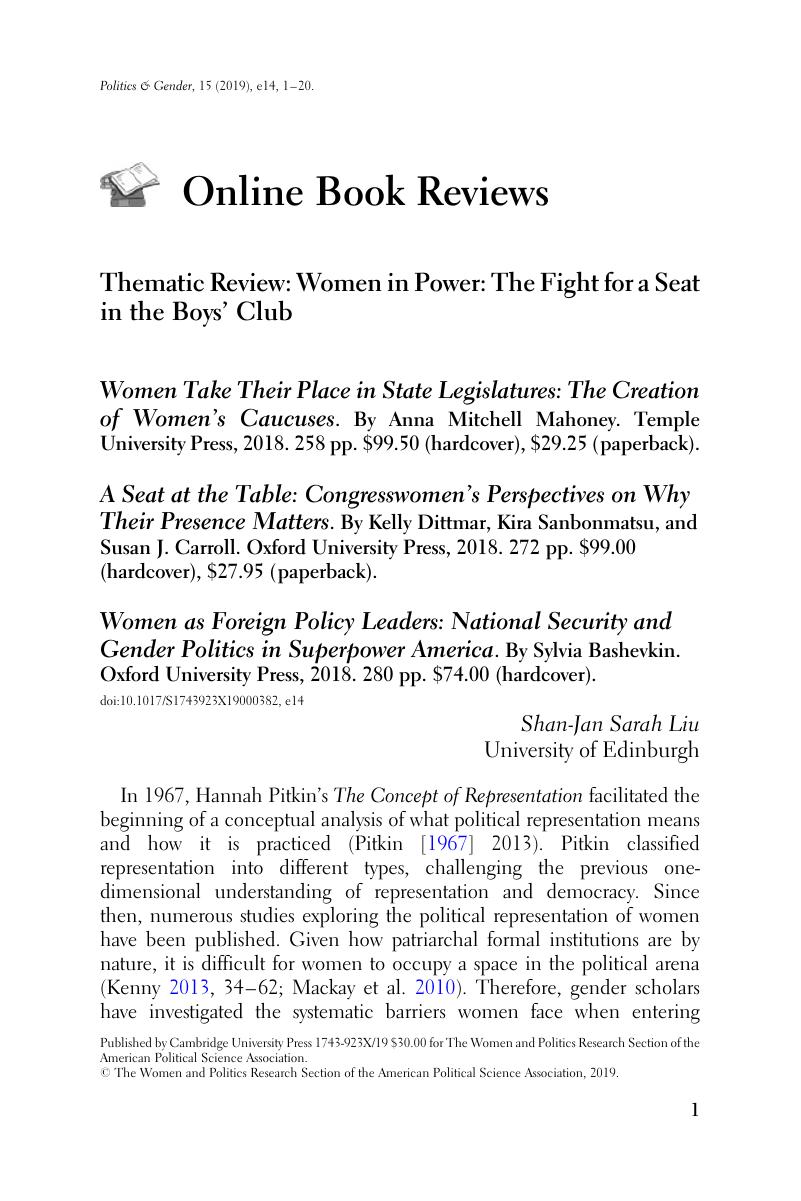Crossref Citations
This article has been cited by the following publications. This list is generated based on data provided by Crossref.
Liu, Shan-Jan Sarah
2020.
Thematic Review: Women in Power: The Fight for a Seat in the Boys’ Club—CORRIGENDUM.
Politics & Gender,
Vol. 16,
Issue. 1,
p.
314.





